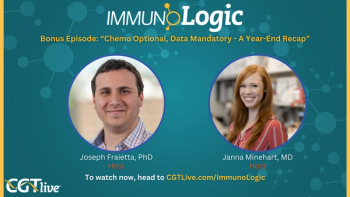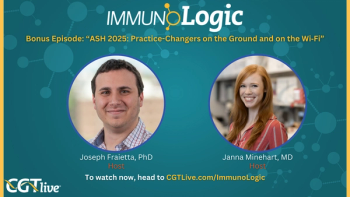
DMD Cell Therapy Continues to Demonstrate Efficacy After 18-month Follow-up
Patients continued to show statistically significant upper limb performance improvements.
Capricor Therapeutics’ CAP-1002, an investigational allogeneic cardiosphere-derived cell therapy intended to treat
HOPE-2-OLE enrolled 13 of the 20 patients who had previously participated in HOPE-2, 6 of whom had received CAP-1002 in HOPE-2 and 7 of whom had received a placebo. Twelve of these 13 patients completed 18 months of follow-up after treatment with CAP-1002 in HOPE-2-OLE. Capricor Therapeutics reported that at the 18-month follow-up, the patients demonstrated statistically significant (P = 0.02) improvements on the Performance of the Upper Limb (PUL version 2.0) scale compared to the placebo group from HOPE-2. Patients who received CAP-1002 in HOPE-2-OLE also demonstrated attenuation of disease progression, regardless of whether they had participated in the treatment group or the placebo group in HOPE-2. During the OLE, CAP-1002 was well-tolerated with a consistent safety profile.
The new data from HOPE-2-OLE builds on the positive data from HOPE-2, including PUL, cardiac MRI assessments, and left ventricular ejection fraction (LVEF) findings. Patients who received CAP-1002 had a favorable mean 2.6-point improvement difference from baseline on the PUL 1.2 mid-level dimension compared to the patients who received placebo (P = 0.014), improvements in heart structure and function on cardiac MRI assessments, and an increase in LVEF indicating slowing of cardiac disease progression by 107% (P = 0.002). HOPE-2 included pediatric and young adult male patients with DMD who are non-ambulant. The patients received infusions of either CAP-1002 or the placebo every 3 months, with the data analyzed at 12 months after the first infusion. In terms of safety, it was noted that 3 patients in HOPE-2 experienced infusion-related hypersensitivity reactions without long-term sequelae and 1 patient discontinued participation in relation to a severe allergic rection.2
“DMD is a progressive disease associated with loss of function over time and there is a critical need for treatment options to slow the rate of decline and preserve upper limb function to enable key everyday activities,” Craig McDonald, national principal investigator and University of California, Davis, professor and Department of Physical Medicine and Rehabilitation chair, said in a statement regarding the news.1 “We are encouraged by the improvements in upper limb function in the treatment group at 18-months and will continue to treat and follow these patients to further evaluate the disease modifying potential of CAP-1002. Taken together, these data build on the impressive results from HOPE-2 and suggest that patients accumulate benefit over time with steady preservation of skeletal muscle functions, which underscore the potential long-term benefit of CAP-1002.”
The participants in HOPE-2-OLE began treatment between 239 and 567 days (mean, 392) after ending treatment with CAP-1002 or the placebo in HOPE-2. In HOPE-2-OLE, the participants received infusions of 150 million CAP-1002 cells every 3 months for 18 months. The trial’s primary end points are the incidence and severity of all treatment-emergent adverse events (TEAEs) at 12 months and the mean change from baseline in upper limb function according to PUL 2.0 at 12 months. Secondary end points include the incidence and severity of all TEAEs at 24 and 36 months; the change from baseline in PUL at 24 and 36 months; the change from baseline in distal-level PUL at 12, 24, and 36 months; the change from baseline in mid-level PUL at 12, 24, and 36 months; and the mean change from baseline in LVEF at 24 and 36 months.
CAP-1002 is now also being evaluated in the phase 3 HOPE-3 clinical trial (NCT05126758). The randomized, double-blind, placebo-controlled study is currently enrolling, with an expected total enrollment of approximately 70 patients. In July 2022,
“In the OLE phase of the HOPE-2 study, we observed statistically significant slowing of the progression of disease across patients treated with CAP-1002,” Linda Marbán, PhD, chief executive officer, Capricor, added to the statement.1 “We are extremely pleased by the robust and consistent results observed to date, which, together with the favorable safety/tolerability profile, suggest that CAP-1002 holds promise as a potential anchor therapy for DMD patients. Further, the long-term efficacy and potential disease modification effect will augment our clinical package as we continue on our regulatory pathway towards potential approval of CAP-1002 for treatment of patients with DMD. We thank the patients, their families, caregivers, and the broader Duchenne community for working with us on this promising therapy.”
REFERENCES
1. Capricor Therapeutics announces positive 18-month results from ongoing HOPE-2 open label extension study of CAP-1002 in Duchenne muscular dystrophy patients. News release. Capricor Therapeutics. January 25, 2023. Accessed January 25, 2023. https://feeds.issuerdirect.com/news-release.html?newsid=7181150467767720
2. McDonald CM, Marbán E, Hendrix S, et al. Repeated intravenous cardiosphere-derived cell therapy in late-stage Duchenne muscular dystrophy (HOPE-2): a multicentre, randomised, double-blind, placebo-controlled, phase 2 trial. The Lancet. 2022;399(10329):1049-1058. Doi: 10.1016/S0140-6736(22)00012-5
3. Capricor Therapeutics announces first patient dosed in pivotal phase 3 study of CAP-1002 for the treatment of Duchenne muscular dystrophy. News release. Capricor Therapeutics. July 19, 2022. Accessed January 25, 2023. https://feeds.issuerdirect.com/news-release.html?newsid=7011515935297837
Newsletter
Stay at the forefront of cutting-edge science with CGT—your direct line to expert insights, breakthrough data, and real-time coverage of the latest advancements in cell and gene therapy.





































